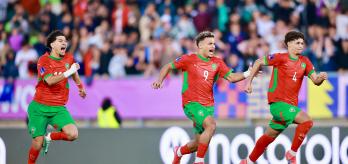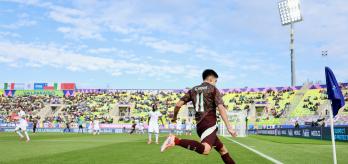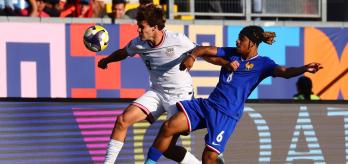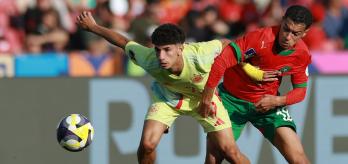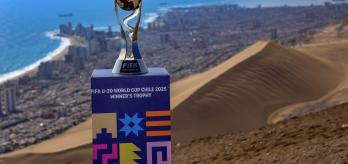The Atlas Cubs began the tournament with an impressive 2-0 victory over UEFA U-20 European champions Spain before seeing off CONMEBOL U-20 champions Brazil with a 2-1 scoreline in their second group-stage match. These performances set the tone as they propelled their way to the final, completing the feat with a thrilling penalty shoot-out victory over France in the semi-final.
FIFA Technical Study Group expert Marcelo Jara explains how Morocco have played to the strengths of their players and, collectively, have proved formidable opponents for all who have come before them.
“Morocco are a very efficient team with a clear way of playing. They defend as a team and put their bodies on the line when they have to. They have strong characters individually, but collectively, there is great chemistry among them, and this is a core strength of the group.
“They have great technical players who read the game and see where opportunities lie. This is evident in the variety they use in deciding how and when to progress the ball, especially when they do it quickly and with a clear strategy. They play with intensity, with and without the ball, and have a great work ethic and talent.”
In possession
Morocco’s ability to play with verticality has been one of their key strengths when in possession. Their players have demonstrated the technical competencies to play forward and break opposition lines early using a range of methods, including long passes, quick combinations and running/dribbling with the ball.
Their proactive attacking style is reflected in that, up to and including the semi-finals, they rank number one for attempted ball progressions, averaging an impressive 48.9 per 30 minutes in possession. They also perform above the tournament average for both long pass % and forward pass % (see graphic 2 below).
As Jara explains, “Morocco have been consistent in their ability to unbalance opposition defences throughout this tournament and when playing teams with different styles and setups. They do this by maximising the strengths of their players and playing in a way that really suits their profiles.
“This quality resonates throughout their team, with a goalkeeper and defenders who are comfortable playing the ball between the lines. Their midfielders are clever in their rotations and movement to disrupt the opposition’s defensive shape and create space, while their forwards are clever and technical. They can run with the ball, take defenders on and play slick combinations to break their opponent’s defensive line. Morocco commit numbers to their attacks and are very efficient at converting their chances to goals.
Out of possession
A strong feature of Morocco’s out-of-possession approach is their distinct use of a compact mid-block. They are the second-highest ranked team for proportion of time spent in a mid-block and are among the teams that concede the fewest chances when in this compact shape.
As Jara notes, “Morocco use this mid-block structure really effectively to protect the centre of the pitch, and the players are very disciplined at getting into position and stopping their opponents from playing through them. They reduce space for opposition ball carriers and close down passing lanes.
“When they press, they do it with great intensity and aggression to deny central space. They also anticipate opportunities to intercept and use the mid-block structure successfully to transition to attack.”
GOALKEEPER: Yanis Benchaouch
Morocco come into the final following an unusual situation in their semi-final victory over France, whereby they used all three named goalkeepers in the same match. First-choice goalkeeper and tournament ever-present Yanis Benchaouch (1) started the game but was replaced in the 64th minute due to injury. Substitute goalkeeper Ibrahim Gomis (12) played the remainder of the game until he was replaced at the end of extra time by Abdelhakim Mesbahi (16), who was brought on for the penalty shoot-out.
If Benchaouch recovers in time, it would be expected that he will start in the final, due to his strong leadership and his impressive shot-stopping capabilities. Up to and including both semi-finals, he ranks as the tournament’s number one goalkeeper for saving on-target attempts that are struck first time (8) and for on-target headers (6).
As goalkeeping expert Pascal Zuberbühler explains, “Benchaouch is the clear number one and is a leader in his team. He has performed very well to date and has a big impact on his team and their strategy. His shot-stopping is amazing, and the number of saves he has made shows how impactful he is.
“Morocco defend their penalty area with great intensity, and as the radar graphic shows, they face a huge number of crosses (33), which are not cut-back crosses. His save rate from headers and first-time shots shows how competent he is in these situations — he has amazing reactions. He is fit, aggressive, powerful, reads these situations very well and is always ready.”







